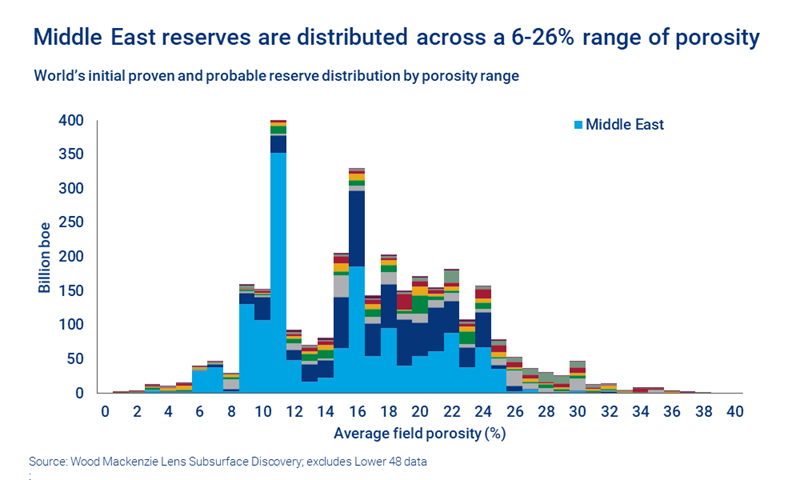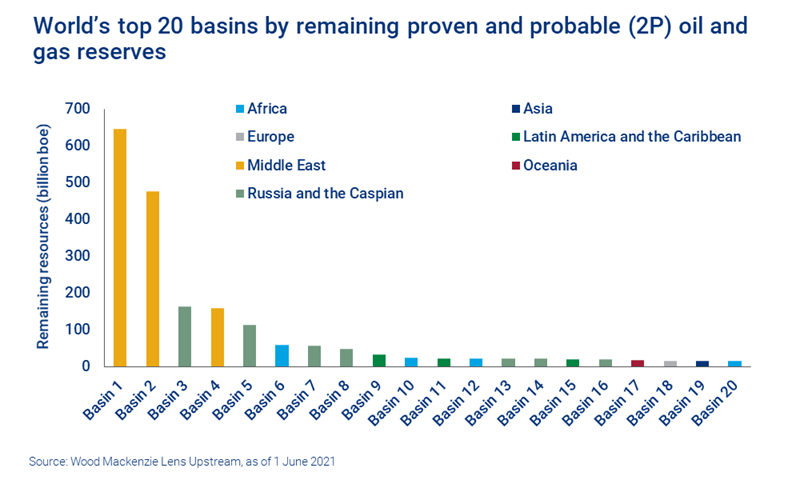What lies beneath: why Middle East upstream resources are so advantaged
The hunt is on for advantaged assets with the lowest costs, lowest carbon emissions and best economics
1 minute read
Alexandre Araman
Director, Middle East Upstream

Alexandre Araman
Director, Middle East Upstream
Alexandre has global experience in commercial research, upstream valuations and supply and demand analysis.
Latest articles by Alexandre
-
Opinion
Iraqi gas production increasing as flaring levels fall
-
Opinion
Can the Iraq-Turkey pipeline logjam be cleared?
-
Opinion
An ADNOC trilogy (part 3): big gas ambitions
-
Opinion
An ADNOC trilogy (part 2): building a gas nation
-
Opinion
An ADNOC trilogy: the tortuous path to gas self-sufficiency
-
Opinion
The Middle East steps on the gas
The upstream industry is navigating uncharted waters. With future oil and gas demand highly uncertain, advantaged resources with the lowest costs, lowest carbon emissions and best economics stand the greatest chance of being commercialised. Without doubt, the Middle East won the geological lottery, but how does it fare on the other fronts?
In a recent report, we used the power of Lens Subsurface Discovery to unpick petroleum systems in the region. Fill in the form for a complimentary extract, or read on for an introduction to our findings.
The Middle East’s geological advantage
Advantaged resources need advantaged rocks and fluids. The Middle East’s accumulation of gigantic oil and gas reserves lies in its organically rich, mature source rocks, thick, porous carbonate reservoirs, effective regional seals and large structural traps. Optimal sedimentation rates and burial gradient preserved the right amount of organic carbon at the right temperature, at the right depth.
Fourteen countries in the Middle East account for only 3.6% of the world’s land mass, but 45% of the world’s proven and probable (2P) oil reserves and 41% of 2P gas reserves. The Middle East has produced 30% of all hydrocarbons to date and holds 53% of total remaining 2P recoverable reserves. Deposited on a passive continental shelf over hundreds of millions of years, Middle East formations are the source of 49% of the world’s net present value (NPV) in upstream oil and gas.
Eight of the 10 most prolific reservoirs are in the Middle East, with quality and thickness ranging from good to excellent. Three Middle East basins hold 1.28 trillion boe of remaining 2P reserves, or the equivalent of 88 years of production at 40 mmboe/d. Across the region some 640 billion boe remain unrecoverable from porous (>20%) reservoirs and 400 billion boe from very permeable (>1000mD) reservoirs. Technology improvements could unlock massive additional resources.
The full report looks at the potential of the Middle Eastern basins in more detail. Fill in the form at the top of the page for a complimentary extract.
Between rich rock and a hard place
Advantaged resources also need advantaged costs, commerciality and a low carbon footprint. The Middle East has, indeed, by far the lowest and most stable lifting costs, thanks to favourable surface conditions – onshore rigs, jack-ups and fixed platforms are cheaper to develop. The geology is also favourable, as thicker and permeable reservoirs are more cost effective to produce.
The region also has an emissions advantage. While it may have the highest emissions globally in absolute terms (Scopes 1 and 2) as the world’s biggest producer, it also has the lowest carbon intensity. The region’s one disadvantage in this regard is that its fluids contain slightly higher proportions of hydrogen sulfide and carbon dioxide and, because of the sheer volumes it produces, it needs to engage in more complex and carbon-intensive processing than other regions.
The Middle East could further reduce its carbon intensity by tackling its significant processing emissions and flaring – the latter particularly in Iraq and Iran – though this is not without its challenges.
The economics of extraction, meanwhile, are skewed decidedly in favour of domestic players. The gigantic value of US$2.39 trillion remaining in the region’s upstream industry essentially benefits domestic oil companies. While international oil companies account for 14% of the production and 11.2% of the remaining capex, they only capture 8% of the resources and 6.5% of the value. Moreover, foreign investors face some of the world’s toughest fiscal terms.
Read the full report for a more in-depth look at the Middle East’s upstream advantages and to see what lies beneath the economics of extraction.
Fill in the form at the top of the page for a complimentary extract, which includes:
- Executive summary
- Advantaged source rocks require advantaged geochemistry (charts)
- And more.








